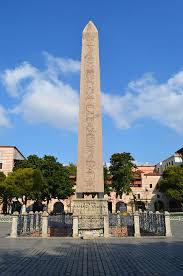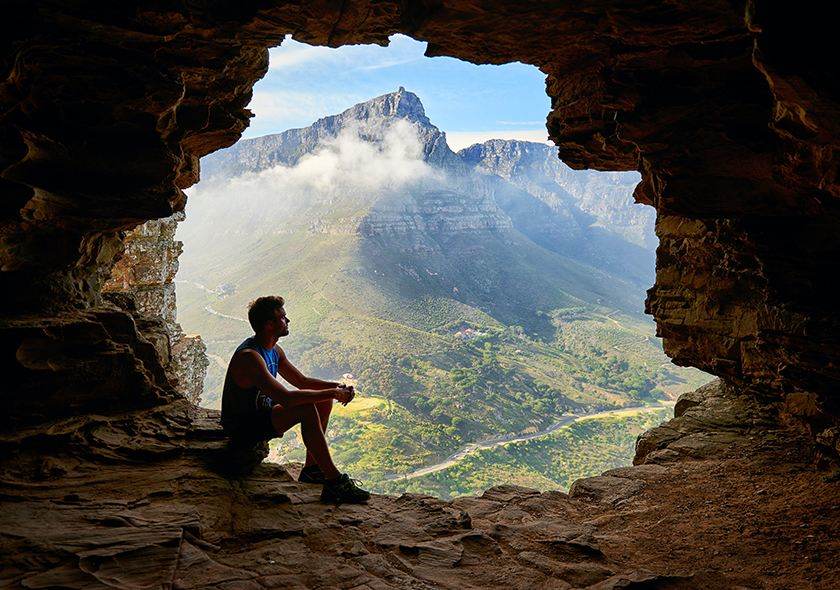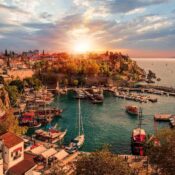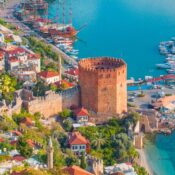The Story Behind the Obelisk in Sultanahmet: What Do the Writings Mean?

The Story Behind the Obelisk in Sultanahmet: What Do the Writings Mean?
The Obelisk in Sultanahmet is not just a magnificent monument but also a symbol of a deep, ancient history. Let’s unravel its story, from its creation in ancient Egypt to its current location in Istanbul, and the meaning behind the inscriptions carved into its surface.
Origins: A Tribute to the Sun God
According to ancient Egyptian belief, the Sun rested on a vertical stone on the first morning of creation. To symbolize this sacred moment, the Egyptians built obelisks—monuments made from single pieces of red granite with a four-cornered base, tapering upward to a pyramid-shaped top. The tops were often covered in gold or silver alloy to attract the light of the Sun God, Amon Ra, believed to ward off evil spirits.
The Obelisk in Sultanahmet was originally erected by Pharaoh Thutmosis III in the 15th century BCE in Heliopolis, near the Karnak Temple. It stood as a tribute to Amon Ra, the Sun God and “King of the Gods.”
Journey to Istanbul
- In 357 CE, Roman Emperor Constantius II transported the obelisk to Alexandria to celebrate the 20th anniversary of his reign.
- Later, in 390 CE, Emperor Theodosius I brought it to Constantinople (modern-day Istanbul) and erected it at the Hippodrome, where it still stands today.
While the original height of the obelisk was 30 meters, part of it was damaged during transportation or re-erection, reducing its height to 18.45 meters (24.87 meters with its base). The obelisk weighs approximately 200 tons and is crafted from red Aswan granite.
Deciphering the Hieroglyphs
The inscriptions on the obelisk are a testament to the power and divine favor of Pharaoh Thutmosis III. Here’s what they say:
- Northwest Facade:
“18th dynasty Pharaoh, ruler of Upper and Lower Egypt. After offering sacrifices to God Amon, Thutmosis, with the aid of Horus, conquered seas and rivers. He built this column on the 30th anniversary of his reign for future celebrations.” - North Facade:
“Having offered his sacrifices to the blessed God Amon, who holds the secret and sacred name, the ruler expanded his territory to Mesopotamia with Amon’s divine help.” - Southeast Facade:
“Pharaoh, chosen by the Sun itself, endowed with power, wealth, and love by Horus, built this monument for his father Ra, spreading the golden light of the Sun across the world.” - Southern Facade:
“Pharaoh, ruler of Upper and Lower Egypt, granted the grace of God Horus, illuminated the horizons with justice and power, leading his army across the Mediterranean and defeating the world.”
Amon Ra and His Influence
The obelisk was dedicated to Amon Ra, the Sun God and ruler of all gods in Egyptian mythology. Ancient texts even suggest that Amon Ra lived among humans, described as taller and mightier, reminiscent of the Nephilim mentioned in the Torah:
“In those days, there were Nephilim (giants) on Earth, men of renown from ancient times.”
Amon Ra, like the Nephilim, is said to have fathered children with human women. The Egyptians believed in his divine power to forgive sins and ended prayers by invoking his name: “Amon Ra.”
A Linguistic Legacy: From Amon Ra to Amen
The sacred name “Amon Ra” might have influenced the Hebrew term “Amen”, meaning “so be it” or “truth.” This connection is significant because:
- In Hebrew, “Amen” signifies agreement, truth, and acceptance.
- In Arabic, it is a plea: “O God, accept my prayer.”
- It has passed unchanged into Latin, English, Spanish, and many other languages.
Thus, the invocation of Amon Ra has echoed through history, uniting cultures and faiths with a shared sacred expression: Amen.
A Sacred Monument of Shared History
The Obelisk in Sultanahmet is more than just an ancient artifact; it’s a bridge between civilizations, religions, and languages. Its story—spanning millennia and continents—reminds us of our shared human heritage and the enduring power of belief.
Next time you visit Sultanahmet, stand before the obelisk and reflect on its incredible journey and the timeless messages carved into its granite surface.
All Categories
Recent Posts
Antalya, The Capiol City of Turkish Riviera
Discover Adventure and Nature with the Alanya Jeep Safari Tour




